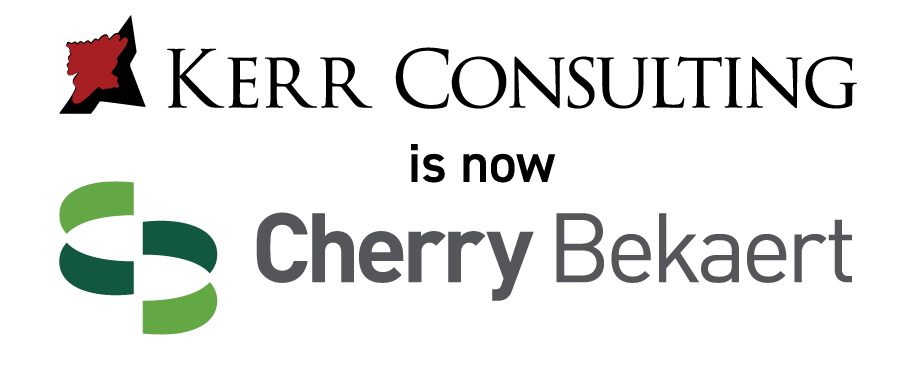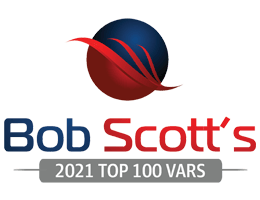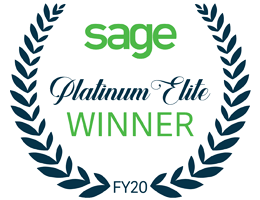How to Use SaaS KPIs to Survive a Market Downturn

In the ever-evolving landscape of business, resilience is the key to survival, especially in times of market downturns. As the ground beneath businesses becomes uncertain, the compass guiding them must remain steadfast. Enter SaaS KPIs (Key Performance Indicators), a beacon of insight that not only illuminates the path forward but also empowers businesses to not only weather the storm but to thrive amid challenges. This article is your guide to harnessing the power of SaaS KPIs to navigate market uncertainties, emerge stronger, and ensure sustained growth.
"As we navigate the stormy waters of business, KPIs act as our compass, guiding us towards success even in the harshest of market downturns."
"Data is the new oil, and SaaS KPIs are the drill that unearths treasures of resilience and growth from the depths of uncertainty."
Setting the Stage: Navigating a Market Downturn with SaaS KPIs
Picture this: the market experiences a sudden downturn, leaving businesses scrambling for stability. Amid this chaos, SaaS KPIs emerge as a lifeline. These metrics go beyond traditional numbers; they encapsulate the essence of your business's health, pointing the way towards resilience. They transform uncertainty into an opportunity to optimize, adapt, and strategize. But first, let's delve into the pivotal role of KPIs in the world of business survival.
The Role of Key Performance Indicators in Ensuring Business Survival
In the realm of business, KPIs are akin to a compass in uncharted waters. These performance metrics offer a tangible understanding of your business's standing, enabling you to not just react but proactively steer your ship. Amid market downturns, where uncertainties prevail, KPIs serve as a steady anchor, grounding decisions in data-driven insights rather than mere guesswork. They act as the bridge between adversity and strategic transformation, guiding businesses towards survival and eventual triumph.
Understanding SaaS KPIs
Defining SaaS Key Performance Indicators
Key Performance Indicators in the realm of Software-as-a-Service (SaaS) transcend beyond revenue figures. They encompass a spectrum of quantifiable metrics that encapsulate customer engagement, operational efficiency, and growth potential. These metrics provide a holistic view of your SaaS business's health, leaving no stone unturned in your pursuit of informed decision-making.
The Significance of Metrics in Business Decision-making
Why do metrics matter? Metrics translate abstract goals into concrete reality. They bridge the gap between aspirations and outcomes, offering a data-driven lens to evaluate performance. In the context of SaaS, metrics are the language of success. They empower you to track progress, identify bottlenecks, and pivot strategies, all while staying aligned with your overarching objectives.
Choosing the Right KPIs
Tailoring Metrics to Your SaaS Model
Just as a tailored suit fits perfectly, so should your KPIs align with your unique SaaS model. Tailoring KPIs to your business's specific needs ensures relevance and accuracy. While some metrics may be universal, others gain significance based on your service offering, target audience, and business goals.
Balancing Leading and Lagging Indicators for Comprehensive Insights
Balance is key. Leading indicators provide a glimpse into future performance, helping you anticipate trends and plan ahead. On the other hand, lagging indicators reflect historical results, shedding light on the consequences of past actions. The synergy of both ensures a comprehensive, forward-looking understanding of your business's trajectory.
Leveraging KPIs During a Downturn
Forecasting Revenue Trends with KPI Insights
When the market takes a downturn, predicting revenue trends becomes paramount. SaaS KPIs play a pivotal role in this endeavor. By analyzing historical data trends, customer behavior, and market shifts, these metrics offer insights into potential revenue trajectories. Armed with this knowledge, you can anticipate challenges, allocate resources wisely, and pivot strategies to navigate the storm.
Tracking Customer Acquisition Costs (CAC) and Customer Lifetime Value (CLTV)
In the world of SaaS, customer acquisition and retention are the pillars of growth. During a market downturn, every customer matters even more. This is where metrics like Customer Acquisition Cost (CAC) and Customer Lifetime Value (CLTV) enter the scene. They provide insights into the cost-effectiveness of acquiring customers and the potential value they bring over their lifecycle. These metrics guide resource allocation, helping you focus efforts on acquiring and retaining the right customers to ensure sustained growth.
Optimizing Customer Retention
Measuring Churn Rate and Enhancing Customer Satisfaction
Churn, the departure of customers, is a challenge amplified during market downturns. SaaS KPIs help you measure and understand churn rates, shedding light on the health of your customer relationships. But it's not just about numbers; it's about customer sentiment. Metrics here go beyond quantification, delving into the qualitative realm of customer satisfaction. By identifying pain points and addressing them swiftly, you not only retain customers but also bolster their loyalty.
Using KPIs to Strengthen Customer Support Strategies
Customer support becomes a lifeline in challenging times. SaaS KPIs assist in measuring the efficiency of your support system. From response times to issue resolution rates, these metrics provide actionable insights to fine-tune your support strategies. By aligning customer support efforts with data-driven insights, you enhance satisfaction, fortify relationships, and foster trust – vital elements during market uncertainties.
Stay tuned for the upcoming sections of this article, where we'll delve into strategies for adapting pricing approaches, optimizing operational efficiency, and enhancing investor communication, all driven by the power of SaaS KPIs.
Adapting Pricing Strategies
Data-driven Pricing Adjustments Based on KPI Insights
In the dynamic landscape of a market downturn, pricing strategies must be agile to remain relevant. SaaS KPIs serve as guiding lights here, illuminating the path towards data-driven pricing adjustments. These metrics unveil patterns in customer behavior, shedding light on how price changes impact conversions, retention, and revenue. Armed with this insight, you can make informed pricing decisions that resonate with your customers while maintaining your bottom line.
Aligning Pricing with Customer Value in a Volatile Market
A market downturn prompts customers to scrutinize value more closely. SaaS KPIs provide a window into customer engagement and satisfaction. By aligning pricing with perceived value, you enhance customer loyalty and mitigate the risk of churn. KPIs bridge the gap between what customers expect and what they receive, ensuring that your pricing remains competitive and justifiable even in turbulent times.
Operational Efficiency Through KPIs
Streamlining Operations with Data-driven Insights
Efficiency becomes the currency of survival during a market downturn. This is where SaaS KPIs become your strategic allies. These metrics expose inefficiencies, bottlenecks, and areas for improvement within your operations. By leveraging insights from KPIs, you can streamline workflows, eliminate redundancies, and enhance overall operational efficiency. The result? Optimized resource utilization and a leaner, more agile business.
Reducing Costs and Maximizing Resource Allocation
Resource scarcity amplifies the importance of resource optimization. SaaS KPIs enable you to identify cost centers and allocate resources strategically. From pinpointing underperforming features to optimizing cloud utilization, these metrics provide a roadmap for minimizing costs while maintaining service quality. In a market downturn, smart resource allocation is the difference between stagnation and growth.
Enhancing Investor Communication
Building Trust through Transparent KPI Reporting
Market downturns send shockwaves through investor confidence. SaaS KPIs come to the rescue, offering a transparent view of your business's performance. Through regular and honest reporting, you build trust with investors, demonstrating your commitment to data-driven decision-making. This transparency showcases your resilience and ability to navigate challenges, reinforcing investor confidence during turbulent times.
Demonstrating Business Resilience with Metrics
Numbers speak louder than words, especially during adversity. SaaS KPIs become a visual representation of your business's resilience. As you weather the storm, these metrics show how you adapt, optimize, and pivot. By showcasing how your KPIs remain steady amid market challenges, you communicate a story of strength and adaptability that resonates with stakeholders.
Agile Marketing Approaches
Refining Marketing Campaigns with KPI Analysis
Marketing strategies demand precision during a downturn. SaaS KPIs provide insights into which campaigns are yielding the best results. From click-through rates to conversion rates, these metrics guide your marketing team to refine strategies, focusing efforts on campaigns that resonate with your audience. KPI-driven marketing ensures that every dollar spent counts, enhancing your ROI even in challenging times.
Allocating Resources to High-Impact Channels for Better ROI
Resource allocation becomes a strategic chess game during a market downturn. KPIs bring clarity to the board by revealing which marketing channels deliver the highest returns. By concentrating resources on high-impact channels, you ensure that your marketing efforts align with business goals. SaaS KPIs eliminate the guesswork, enabling you to optimize resource allocation and maximize your ROI.
Forecasting and Scenario Planning
Using KPI Projections to Anticipate Market Trends
Anticipation is the cornerstone of survival. SaaS KPIs don the hat of a fortune teller here, projecting future trends based on historical data. These projections provide insight into customer behaviors, shifts in demand, and emerging market opportunities. Armed with this foresight, you can pivot strategies, capitalize on trends, and navigate the market downturn with confidence.
Scenario Planning for Informed Decision-making
Uncertainties demand flexibility. Scenario planning involves preparing for a range of potential outcomes. SaaS KPIs guide this process, offering insights into how your business may perform under various conditions. By weaving KPI insights into your scenario planning, you equip yourself with data-backed strategies that can be activated depending on how the market evolves.
Stay tuned for the remaining sections, where we'll delve into strategies for optimizing customer retention, using KPIs to enhance customer support, and explore real-world case studies of SaaS companies thriving amid market downturns.
Employee Engagement and Performance
Measuring Productivity and Satisfaction with KPIs
Amid a market downturn, your team's morale and productivity are linchpins of resilience. SaaS KPIs extend their reach to the realm of employee engagement. Metrics measuring productivity, satisfaction, and engagement offer insights into your team's well-being. By addressing pain points, celebrating achievements, and optimizing workflows based on KPI insights, you foster an environment where employees can thrive even in challenging times.
Strategies for Remote Work Success Based on Metrics
Remote work has become a norm, making employee performance more critical than ever. SaaS KPIs provide visibility into remote work dynamics, highlighting productivity trends and engagement levels. By deciphering these metrics, you can tailor strategies to enhance remote work efficiency, maintain team cohesion, and ensure the continuity of business operations.
Risk Mitigation and Resource Allocation
Identifying Risks Through KPI Anomalies
In the maze of uncertainties, early detection of risks is a superpower. SaaS KPIs play the role of a vigilant sentinel here. These metrics have the ability to identify anomalies that signal potential challenges. From financial irregularities to operational inefficiencies, KPIs raise red flags, enabling you to address risks swiftly before they escalate.
Resource Allocation Strategies for Risk Management
Risk mitigation requires strategic resource allocation. KPIs guide this allocation process, providing insights into where resources are most needed to counteract potential risks. By channeling resources strategically, you enhance your business's ability to navigate challenges, emerging stronger from the storm.
Case Studies: SaaS Success in Downturns
Real-world Examples of KPI-driven Resilience
Real stories of triumph inspire action. Here, we delve into case studies of SaaS companies that didn't just survive but thrived during market downturns. These examples illustrate how KPIs guided their decision-making, leading to remarkable resilience and growth. From pivoting strategies to optimizing operations, these stories offer a blueprint for harnessing the power of metrics in times of adversity.
Extracting Lessons for Effective Strategy
Case studies are not just stories; they're wellsprings of wisdom. By dissecting the successes of SaaS companies, we extract valuable lessons applicable to your strategy. These lessons illuminate the art of adapting pricing, refining marketing efforts, optimizing operations, and enhancing customer retention through the lens of SaaS KPIs. They provide actionable insights that can be tailored to your business's unique journey.
Conclusion
Harnessing SaaS KPIs for Business Resilience
In the crucible of a market downturn, SaaS KPIs emerge as the beacon that guides businesses through turbulence. These metrics, far from being mere numbers, are the language of adaptability, the soundtrack of resilience, and the blueprint of growth.
Navigating Market Downturns with Metrics-based Strategies
As the winds of uncertainty blow, SaaS KPIs offer a steadfast anchor, grounding your decisions in data-backed insights. They empower you to navigate the storm with informed strategies that pivot, optimize, and strengthen your business's ability to not only survive but to emerge stronger.
Summarize Key Points
From forecasting revenue trends to optimizing customer retention, operational efficiency, and beyond, every facet of business is enhanced by the power of SaaS KPIs. As you harness the potential of these metrics, remember that you're not just analyzing numbers; you're shaping the future of your business, one data point at a time.
FAQs
How do SaaS KPIs differ from traditional business KPIs?
SaaS KPIs are tailored to the unique subscription-based model of software services, focusing on metrics like customer retention, churn rate, and customer lifetime value.
What is the significance of leading and lagging indicators in SaaS KPIs?
Leading indicators offer insights into future performance, while lagging indicators assess historical results. A balance of both provides a comprehensive view of business health.
How can SaaS KPIs enhance investor communication?
Transparent reporting of KPI-driven progress showcases your company's resilience and adaptability, bolstering investor confidence.
Why is employee engagement important in a market downturn?
Engaged employees are more likely to contribute creatively to overcoming challenges. Monitoring employee productivity and satisfaction through KPIs aids in this effort.
Can SaaS KPIs guide pricing adjustments during market uncertainties?
Absolutely. By analyzing KPI data, you can adjust pricing models to match customer preferences and perceived value, ensuring continued revenue streams.
What are the key SaaS KPIs for customer retention?
Key SaaS KPIs for customer retention include Churn Rate, Customer Lifetime Value (CLTV), Net Promoter Score (NPS), and Customer Satisfaction (CSAT). These metrics help gauge customer loyalty, identify at-risk customers, and measure overall satisfaction to tailor retention strategies effectively.
How can operational efficiency be improved using KPIs?
Operational efficiency can be enhanced using KPIs by tracking metrics like process cycle time, resource utilization, and error rates. These KPIs highlight inefficiencies, enabling businesses to streamline processes, allocate resources optimally, and reduce costs, ultimately boosting operational efficiency.








